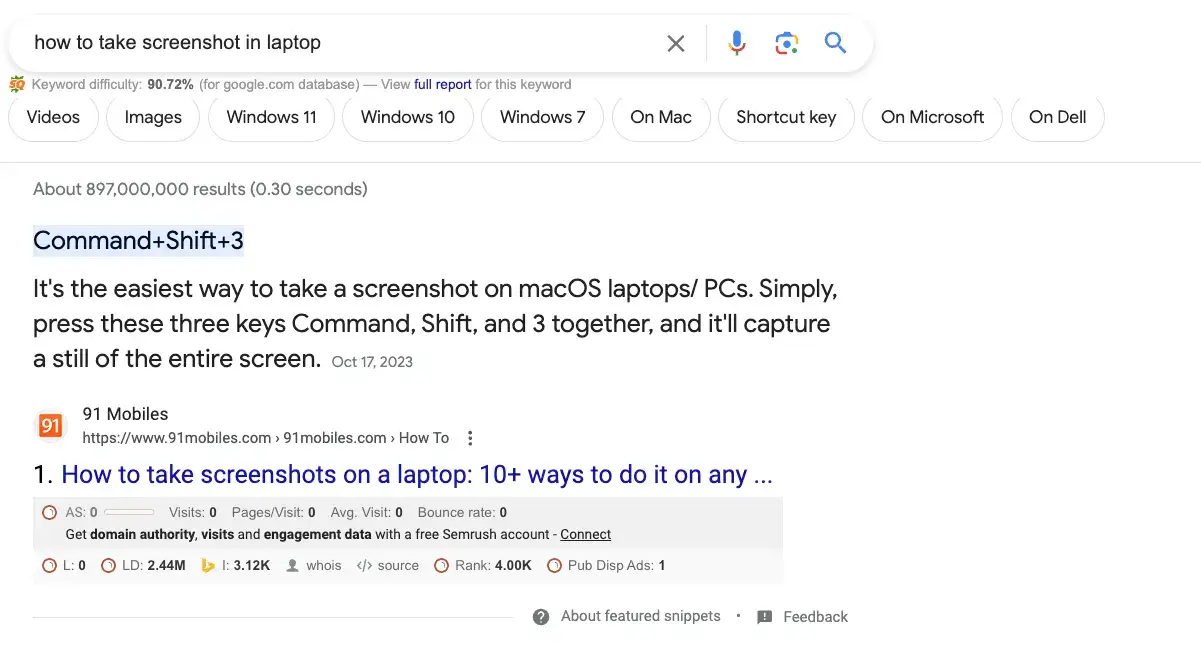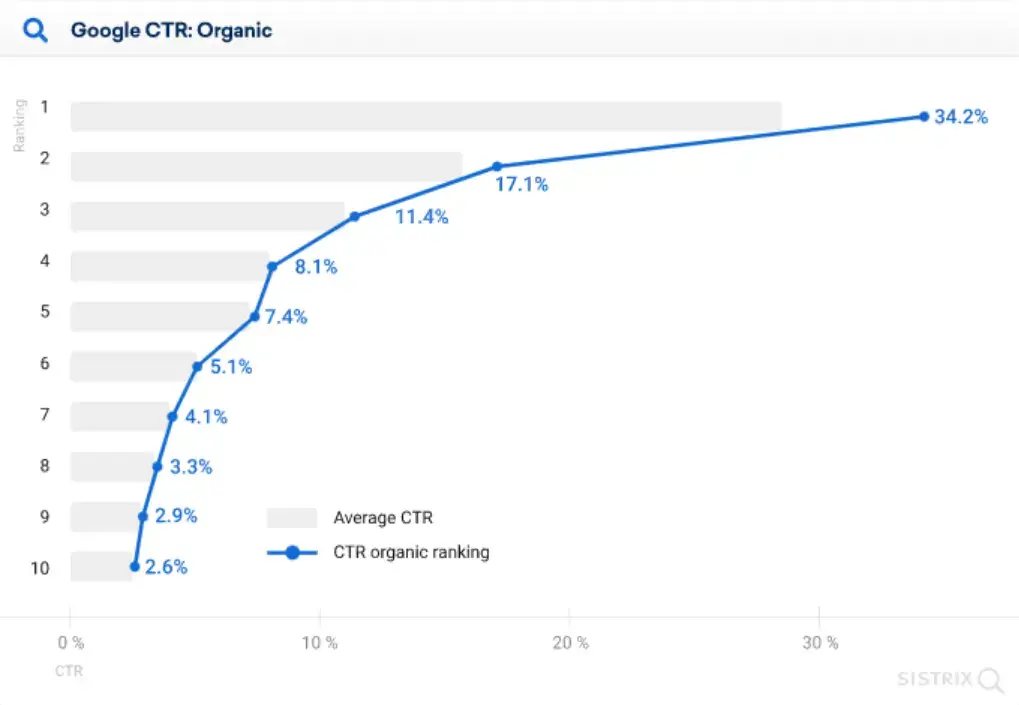What’s even better than ranking first in the organic results on SERPs? Position zero! But what is position zero? And why should I want it? Let's discuss...
It’s a unique concept and the SEO holy grail. Position zero (P0) can prevent your content from getting lost in the sea of search results. It is more like having the spotlight shine on your content.
Skip to: Featured Snippet Optimization (in 5 steps)
What Does Position Zero Mean?
Position Zero, or P0, means an organic spot between paid ads on the top of the search engine results page (SERPs) and the organic search results below.
It is content that is the most relevant and valuable information to a person searching for answers on a search engine.
It displays the content, answering the person’s question they are searching for without clicking through to a website.
Importance of Position Zero
Search engines have increased the number of paid ads and position zero results. They have lowered the organic search results and reduced the number of organic results that page one of SERPs can display.
So, while organic search results are essential, optimizing for featured snippets to secure position zero is more important.
A user typically attaches more credibility to position zero content than ads. The visibility and traffic of your website can get a massive boost with the appearance of your content in position zero.
To users, position zero is like Google’s stamp of approval. Position zero will also increase the number of qualified leads you get.
To summarize, the most important benefits of position zero are credibility, visibility, increased traffic, and better leads.
About Featured Snippets
Featured snippets occupy the much-coveted ‘Position Zero.’ According to Google Search Central, featured snippets are special boxes that display the descriptive snippet first.
This format is a reverse of the regular search results. Usually, featured snippets contain only one listing. In some cases, there might be more than one.

Example of a featured snippet
Within Google search results, featured snippets and Knowledge Graph information may appear on their own or in the ‘People also ask’ section.
Additionally, webpages that appear as a featured snippet won’t appear again on page one of Google’s organic search results.
Featured snippets differ from rich snippets/rich results, which are organic search results with enhanced visual appeal and more data.
When a SERP has a featured snippet, the clickthrough rate (CTR) for the page in the first position of the organic search results drops by 5.3%.
The design of featured snippets is such that it draws the attention of the users. That’s probably why featured snippets have the highest CTR (42.9%).

Source: Smart Insights through Sistrix
When a user clicks on a featured snippet, it typically takes the user to the part of the page containing the answer to the query (basically the part that appeared in the snippet) through automatic scrolling.
Featured Snippet Optimization (in 5 steps)
- Understand your market and opportunities
- Do keyword research
- Use questions in your headings
- Arrange your content and use structured data
- Learn from your competitors
Featured snippets focus more on the page's content than link metrics. Even SERPs' websites on page 2 can get position zero with a featured snippet.
Here are a few tips that can help you optimize for featured snippets and position zero:
1. Understand your market and opportunities
The first thing you need to do is understand the opportunities for your site. Featured snippets may only be as valuable across some markets.
Typically, when SERPs display the local pack, featured snippets do not appear. Businesses with a physical location or primarily focused on a particular geographic area will benefit more from local SEO.
On the other hand, if your website belongs to a niche where FAQs and detailed steps/processes are sought after, you will benefit from optimizing for featured snippets.
You also need to understand the type of featured snippets that are more useful/popular in your niche and optimize for that type of snippet.
2. Do keyword research
As with all SEO best practices, you need keyword research backing your efforts to appear in featured snippets. Featured snippets appear for terms that have a higher search volume.
Long-tailed queries have a higher tendency to return featured snippets. Question words and action words are most important when it comes to featured snippets.
Also, pay attention to search terms with implied questions if you wish your content to appear at position zero.

Source: Freepik
3. Use questions in your headings
It is such an easy and simple trick. You’re handing over the snippet's content to Google on a platter.
The user query should make a prominent appearance as a question on your page. Follow this question with a concise answer (40-60 words), and follow it up with details.
The key is to select questions that can be answered quickly but require in-depth explanation.
What this will do is, when your content appears in a featured snippet, the user will see the short answer and know that the content they are seeking is available on your page.
The user must click the link to your page to obtain the detailed information.
4. Arrange your content and use structured data
Search engines look for code on your site that can let them know easily and quickly what your content is about.
Structured data provides explicit clues about the content and makes the work of crawlers easier.
It’s even more critical for your content to have or follow a clear, structured format. Wherever applicable, use lists or tables.
Delineate the steps in processes and mark them clearly. By structuring your content properly, you will increase its potential for selection for specific types of featured snippets.
Attaching a video under the answer for a ‘how to’ question is more likely to get you a featured snippet and higher CTR.
5. Learn from your competitors
Study your competitors and learn about the popular featured snippets in your market. You can use online tools to identify the keyword groups for which your competitors have successfully got featured snippets.
With the aid of tools, you’ll be able to understand the topics, the target keywords, the type of featured snippets, and the users' search intent.
You might even benefit from the SEO recommendations that the tools offer. You need to provide more value than your competitors through your content.
Wrapping Up
Earning the P0 spot is like securing SEO gold. Superb content that is helpful to users is paramount for getting a featured snippet and acquiring position zero.
To increase the credibility, traffic, and visibility of your website, optimization for featured snippets should be on your list of SEO strategies.

